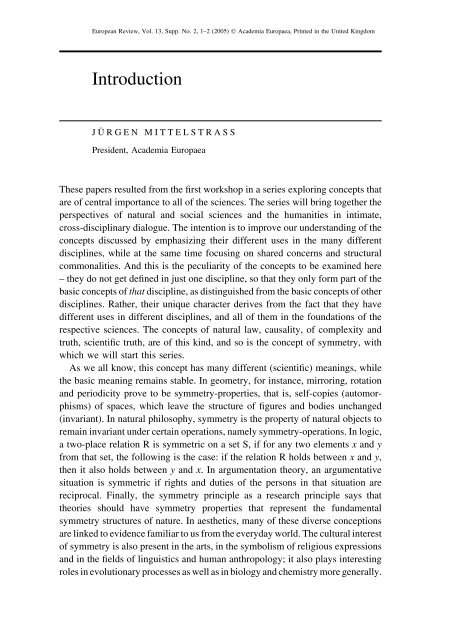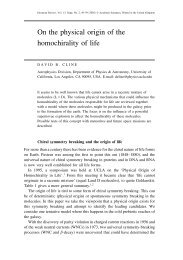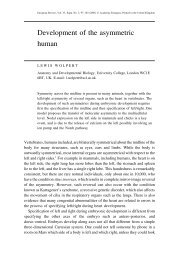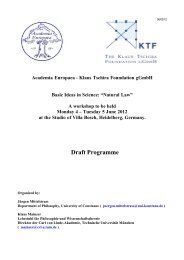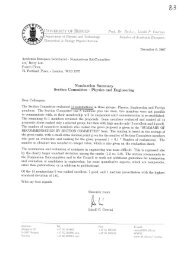Introduction - Academia Europaea
Introduction - Academia Europaea
Introduction - Academia Europaea
- No tags were found...
You also want an ePaper? Increase the reach of your titles
YUMPU automatically turns print PDFs into web optimized ePapers that Google loves.
European Review, Vol. 13, Supp. No. 2, 1–2 (2005) © <strong>Academia</strong> <strong>Europaea</strong>, Printed in the United Kingdom<strong>Introduction</strong>JÜRGEN MITTELSTRASSPresident, <strong>Academia</strong> <strong>Europaea</strong>These papers resulted from the first workshop in a series exploring concepts thatare of central importance to all of the sciences. The series will bring together theperspectives of natural and social sciences and the humanities in intimate,cross-disciplinary dialogue. The intention is to improve our understanding of theconcepts discussed by emphasizing their different uses in the many differentdisciplines, while at the same time focusing on shared concerns and structuralcommonalities. And this is the peculiarity of the concepts to be examined here– they do not get defined in just one discipline, so that they only form part of thebasic concepts of that discipline, as distinguished from the basic concepts of otherdisciplines. Rather, their unique character derives from the fact that they havedifferent uses in different disciplines, and all of them in the foundations of therespective sciences. The concepts of natural law, causality, of complexity andtruth, scientific truth, are of this kind, and so is the concept of symmetry, withwhich we will start this series.As we all know, this concept has many different (scientific) meanings, whilethe basic meaning remains stable. In geometry, for instance, mirroring, rotationand periodicity prove to be symmetry-properties, that is, self-copies (automorphisms)of spaces, which leave the structure of figures and bodies unchanged(invariant). In natural philosophy, symmetry is the property of natural objects toremain invariant under certain operations, namely symmetry-operations. In logic,a two-place relation R is symmetric on a set S, if for any two elements x and yfrom that set, the following is the case: if the relation R holds between x and y,then it also holds between y and x. In argumentation theory, an argumentativesituation is symmetric if rights and duties of the persons in that situation arereciprocal. Finally, the symmetry principle as a research principle says thattheories should have symmetry properties that represent the fundamentalsymmetry structures of nature. In aesthetics, many of these diverse conceptionsare linked to evidence familiar to us from the everyday world. The cultural interestof symmetry is also present in the arts, in the symbolism of religious expressionsand in the fields of linguistics and human anthropology; it also plays interestingroles in evolutionary processes as well as in biology and chemistry more generally.


